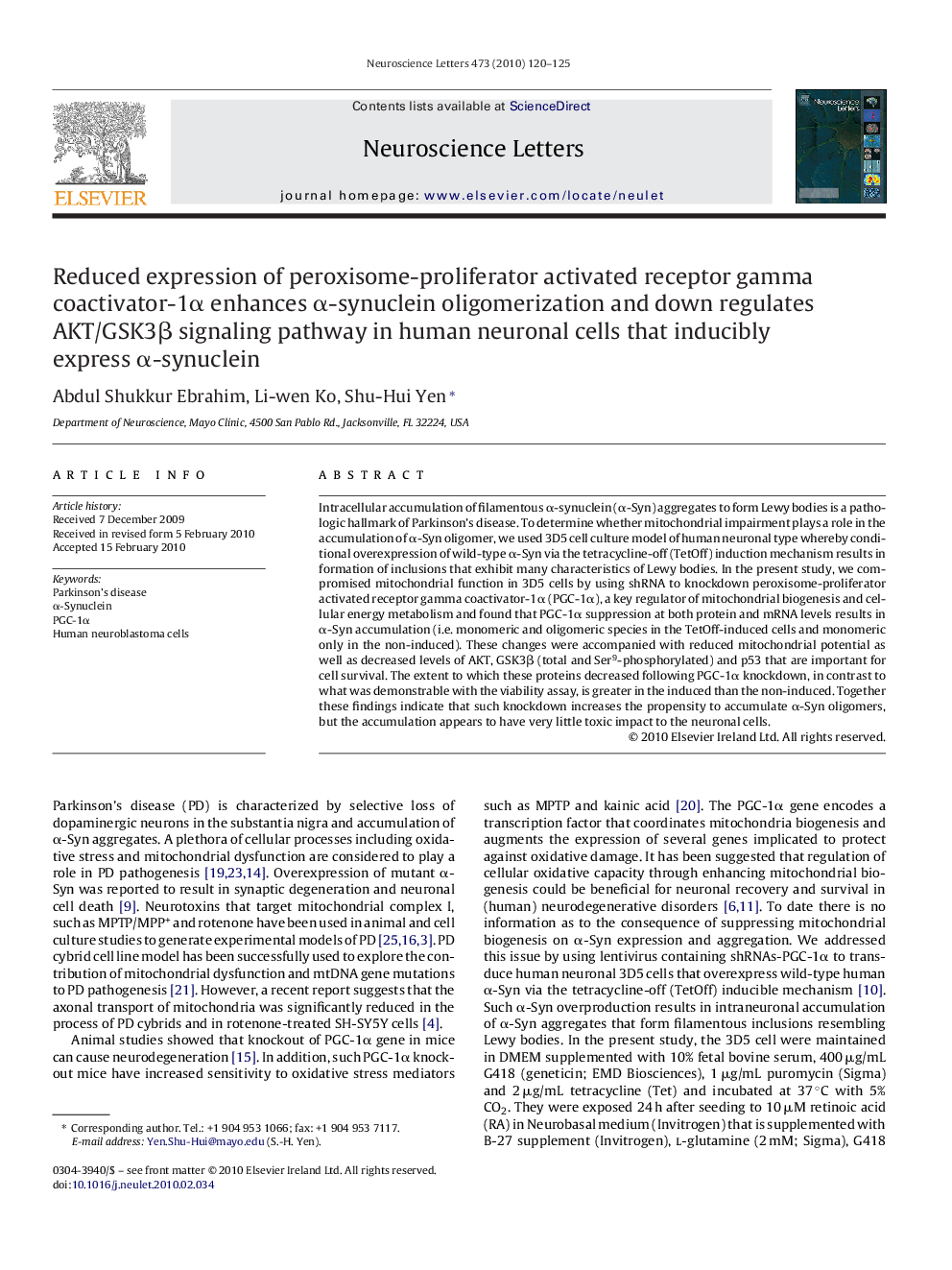| Article ID | Journal | Published Year | Pages | File Type |
|---|---|---|---|---|
| 4346280 | Neuroscience Letters | 2010 | 6 Pages |
Abstract
Intracellular accumulation of filamentous α-synuclein (α-Syn) aggregates to form Lewy bodies is a pathologic hallmark of Parkinson's disease. To determine whether mitochondrial impairment plays a role in the accumulation of α-Syn oligomer, we used 3D5 cell culture model of human neuronal type whereby conditional overexpression of wild-type α-Syn via the tetracycline-off (TetOff) induction mechanism results in formation of inclusions that exhibit many characteristics of Lewy bodies. In the present study, we compromised mitochondrial function in 3D5 cells by using shRNA to knockdown peroxisome-proliferator activated receptor gamma coactivator-1α (PGC-1α), a key regulator of mitochondrial biogenesis and cellular energy metabolism and found that PGC-1α suppression at both protein and mRNA levels results in α-Syn accumulation (i.e. monomeric and oligomeric species in the TetOff-induced cells and monomeric only in the non-induced). These changes were accompanied with reduced mitochondrial potential as well as decreased levels of AKT, GSK3β (total and Ser9-phosphorylated) and p53 that are important for cell survival. The extent to which these proteins decreased following PGC-1α knockdown, in contrast to what was demonstrable with the viability assay, is greater in the induced than the non-induced. Together these findings indicate that such knockdown increases the propensity to accumulate α-Syn oligomers, but the accumulation appears to have very little toxic impact to the neuronal cells.
Related Topics
Life Sciences
Neuroscience
Neuroscience (General)
Authors
Abdul Shukkur Ebrahim, Li-wen Ko, Shu-Hui Yen,
